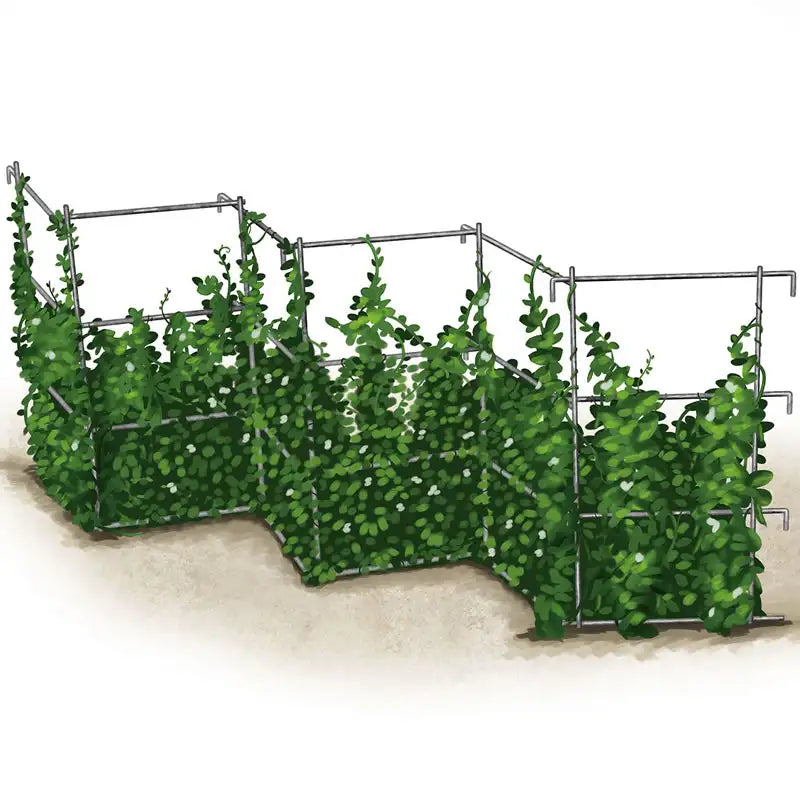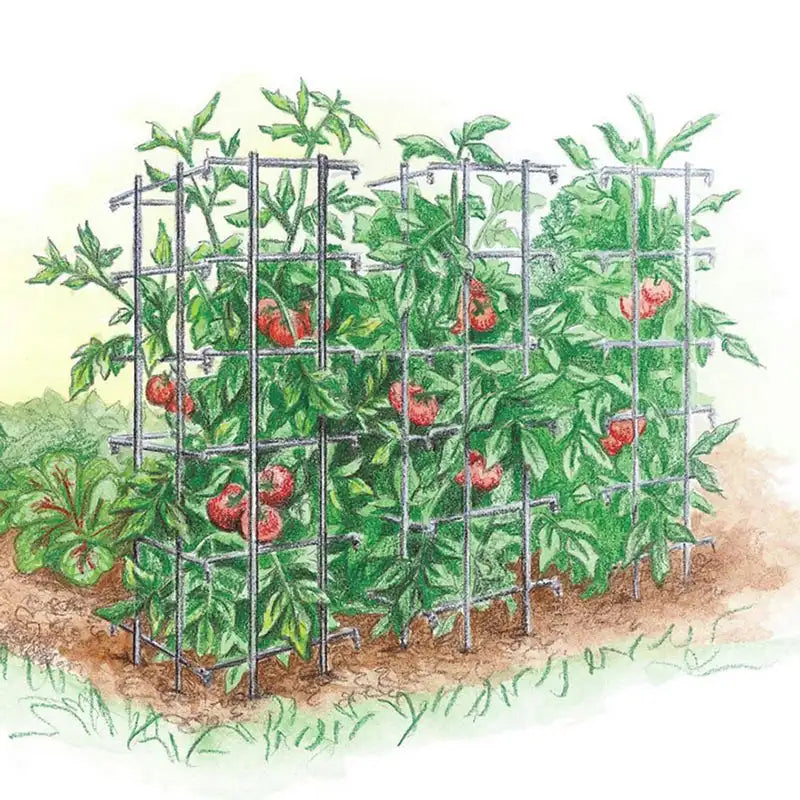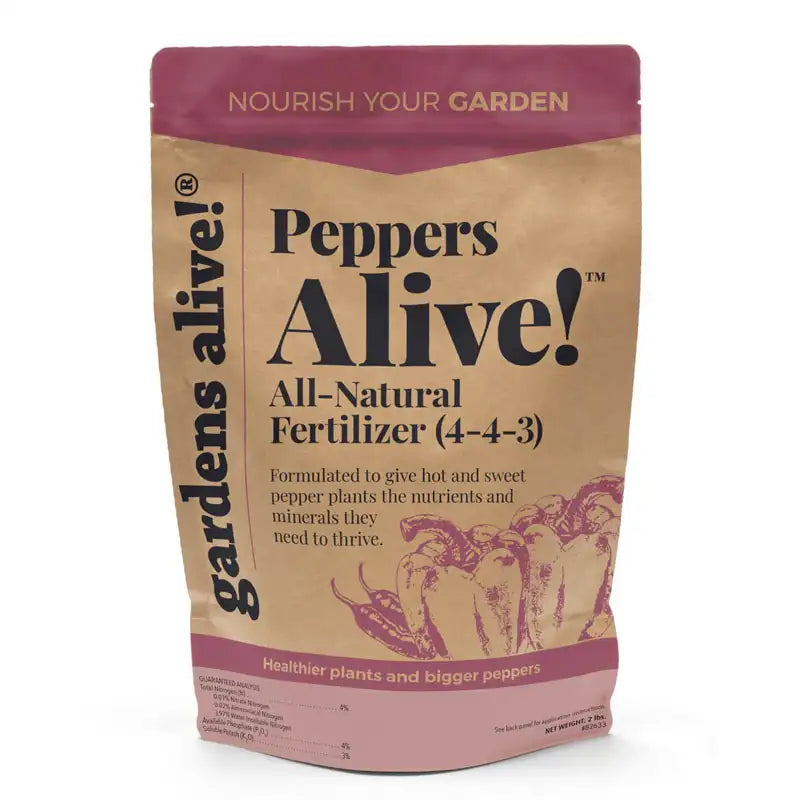Fighting Produce-flation; Tomatoes and Peppers
If truth be told, you'll save more money and better protect yourself against store shortages by growing crops that produce the biggest bounty per square foot, like peas and leafy greens in the Spring and beans in the Summer. You'll also get better quality peas and green beans than you would in any produce section, as these crops have to be hand-harvested and are often left on the vine too long in commercial growing.
When you grow your own, you can pick them young and enjoy them the same day. So instead of getting the equivalent of the 99 cents a pound string beans that are tough and stringy, you'll be picking them young and slender; the kind that sells for four times as much at the market. You've never really tasted a super-sweet snow pea, snap pea, or sublimely tasty green bean until you grow your own.
Tomatoes? Depends on how much room you have. The super-tasty and often-heirloom indeterminate types need to be restrained inside a two-foot diameter cage made of welded wire with a foot of open space all around for airflow or the equivalent (no chicken wire!). Better behaved determinate or 'bush' varieties will produce more fruits in much less space. Some of the newer 'dwarf-bush' types like my new favorite Tasmanian Chocolate have a flavor that often rivals the massively vined indeterminates, and yet they can be grown in a medium-to-large size container.
I will personally continue to grow a couple of the indeterminates, if only for bragging rights--the sunset-colored beauty of a Striped Marvel, the naturally smoky flavor of a Black Krim, or the sheer massiveness of a Radiator Charlie's Mortgager Lifter (tomatoes the size of a child's head!). You should grow a few of these as well, especially if you have a lot of garden space, because these tomatoes are art, not commerce. Biting into one fresh in the field is like taking a bite of summer itself.
But let's go back to saving money. I always grow a lot of paste tomatoes (sometimes called 'plum', 'sauce' or Roma) with the goal of putting up enough tomato sauce to last me through the following year's harvest. Paste tomatoes have few seeds and little juice, making them ideal for this kind of preservation. Be sure to also grow lots of basil and/or oregano to go into the sauce (a finished pint of which makes a GREAT gift!).
'Roma' is the original paster. San Marzano (or the improved Super San Marzano) also makes excellent sauce. And new in my garden this year is Ukrainian Purple, described as "plum shaped purple-red fruits with excellent flavor". I just discovered they're indeterminate (as is San Marzano) so caged they will be. (Romas are well behaved determinates.)
Extremely Important: Check the 'days to maturity' listing before you fall in love with a specific tomato. Some of the best heirloom varieties take a long season to produce their first fruits, while determinates ripen up in much less time. If you're located on a line from where I garden in Eastern PA to the Rockies, or further North in the mid-Atlantic, be realistic and don't try and grow a 110-day tomato.
Same with peppers. The classic big blocky sweet bell pepper you see in markets is California Wonder or a similar variety. This heirloom pepper plant tops out at around two feet, but the fruits are heavy and require strong support. Although yellow and orange varieties are available, the classic CW ripens to red 80 days from transplant. Not 80 days from seeding; 80 days from the time you transplant two-month-old seedlings into warm soil. And that's just for the first one to ripen, so be seasonally conscious.
Other sweet peppers worth growing are the non-bell-shaped Gypsy, Marconi, and the elongated Italian Frying Peppers. For short seasons or container gardens, I highly recommend varieties in the 'mini-bell' family, like Baby Belle and Yum Yum, which ripens up a mere 55 days after transplant. Sometimes called 'snacking peppers', the plants produce their tasty treats early and often.
Big Note #1: Most of us who start our plants from seed tend to do it all at once (well, I do anyway), despite the fact that most plants tend to grow at different rates. An extreme example is peppers vs tomatoes. Tomatoes being started from seed grow tall faster than any other plant I know, requiring the seed starter to constantly adjust their grow lights. Peppers prefer warmer bottom heat to germinate, and then grow slooowly, making them frustratingly small at planting time.
I will attempt to rectify this issue by starting my peppers earlier than ever. I typically start all my plants when the Philadelphia Flower Show ends, which will be March 12 this year; and that's when I WILL start my tomatoes. But to try and get an earlier harvest, I'm going to start pepper seeds around February 1st. At least they'll be a decent size when they go outside.
I'd say that only leaves hot peppers to discuss, but it also leaves out eggplant, potatoes, onions (which have skyrocketed in price lately), herbs and lotsa other stuff. So right now I'm torn. Should I do one more article on how to choose the best varieties for you and your family? Or direct you to our vast archive of articles at the Gardens Alive website for that info and move on topic wise?
Stay tuned for the Bat-answer, kats and kittens!
When you grow your own, you can pick them young and enjoy them the same day. So instead of getting the equivalent of the 99 cents a pound string beans that are tough and stringy, you'll be picking them young and slender; the kind that sells for four times as much at the market. You've never really tasted a super-sweet snow pea, snap pea, or sublimely tasty green bean until you grow your own.
Tomatoes? Depends on how much room you have. The super-tasty and often-heirloom indeterminate types need to be restrained inside a two-foot diameter cage made of welded wire with a foot of open space all around for airflow or the equivalent (no chicken wire!). Better behaved determinate or 'bush' varieties will produce more fruits in much less space. Some of the newer 'dwarf-bush' types like my new favorite Tasmanian Chocolate have a flavor that often rivals the massively vined indeterminates, and yet they can be grown in a medium-to-large size container.
I will personally continue to grow a couple of the indeterminates, if only for bragging rights--the sunset-colored beauty of a Striped Marvel, the naturally smoky flavor of a Black Krim, or the sheer massiveness of a Radiator Charlie's Mortgager Lifter (tomatoes the size of a child's head!). You should grow a few of these as well, especially if you have a lot of garden space, because these tomatoes are art, not commerce. Biting into one fresh in the field is like taking a bite of summer itself.
But let's go back to saving money. I always grow a lot of paste tomatoes (sometimes called 'plum', 'sauce' or Roma) with the goal of putting up enough tomato sauce to last me through the following year's harvest. Paste tomatoes have few seeds and little juice, making them ideal for this kind of preservation. Be sure to also grow lots of basil and/or oregano to go into the sauce (a finished pint of which makes a GREAT gift!).
'Roma' is the original paster. San Marzano (or the improved Super San Marzano) also makes excellent sauce. And new in my garden this year is Ukrainian Purple, described as "plum shaped purple-red fruits with excellent flavor". I just discovered they're indeterminate (as is San Marzano) so caged they will be. (Romas are well behaved determinates.)
Extremely Important: Check the 'days to maturity' listing before you fall in love with a specific tomato. Some of the best heirloom varieties take a long season to produce their first fruits, while determinates ripen up in much less time. If you're located on a line from where I garden in Eastern PA to the Rockies, or further North in the mid-Atlantic, be realistic and don't try and grow a 110-day tomato.
Same with peppers. The classic big blocky sweet bell pepper you see in markets is California Wonder or a similar variety. This heirloom pepper plant tops out at around two feet, but the fruits are heavy and require strong support. Although yellow and orange varieties are available, the classic CW ripens to red 80 days from transplant. Not 80 days from seeding; 80 days from the time you transplant two-month-old seedlings into warm soil. And that's just for the first one to ripen, so be seasonally conscious.
Other sweet peppers worth growing are the non-bell-shaped Gypsy, Marconi, and the elongated Italian Frying Peppers. For short seasons or container gardens, I highly recommend varieties in the 'mini-bell' family, like Baby Belle and Yum Yum, which ripens up a mere 55 days after transplant. Sometimes called 'snacking peppers', the plants produce their tasty treats early and often.
Big Note #1: Most of us who start our plants from seed tend to do it all at once (well, I do anyway), despite the fact that most plants tend to grow at different rates. An extreme example is peppers vs tomatoes. Tomatoes being started from seed grow tall faster than any other plant I know, requiring the seed starter to constantly adjust their grow lights. Peppers prefer warmer bottom heat to germinate, and then grow slooowly, making them frustratingly small at planting time.
I will attempt to rectify this issue by starting my peppers earlier than ever. I typically start all my plants when the Philadelphia Flower Show ends, which will be March 12 this year; and that's when I WILL start my tomatoes. But to try and get an earlier harvest, I'm going to start pepper seeds around February 1st. At least they'll be a decent size when they go outside.
I'd say that only leaves hot peppers to discuss, but it also leaves out eggplant, potatoes, onions (which have skyrocketed in price lately), herbs and lotsa other stuff. So right now I'm torn. Should I do one more article on how to choose the best varieties for you and your family? Or direct you to our vast archive of articles at the Gardens Alive website for that info and move on topic wise?
Stay tuned for the Bat-answer, kats and kittens!




